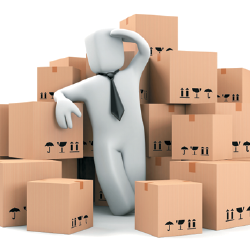 |
 Candy Adams,
Candy Adams,
CTSM, CME,
CEM, CMP, CMM,
is an independent exhibit-management
consultant, trainer, speaker, writer, and an Exhibitor conference
faculty member.
CandyAdams
@BoothMom.com
|
| |
 ccording to EXHIBITOR's 2010 Economic Outlook Survey, 33 percent of exhibit managers plan to cut staff travel/lodging costs in 2010. At best, this means sacrificing comfort and convenience; at worst it means an insufficient and travel-weary booth staff. ccording to EXHIBITOR's 2010 Economic Outlook Survey, 33 percent of exhibit managers plan to cut staff travel/lodging costs in 2010. At best, this means sacrificing comfort and convenience; at worst it means an insufficient and travel-weary booth staff.
Trade show road warriors all know that travel these days is both trying and tiring. Airlines routinely overbook flights, and most charge absurdly high fees for checked baggage, pillows, blankets, and on-plane food. People still have a right to be reasonably comfortable when they travel, but it's getting tougher all the time, given the need to continue squeezing corporate pennies.
So what can exhibit managers do to rein in travel-related spending without wrecking morale and sacrificing comfort for themselves and their staffers? Here are 10 tips to help you minimize the bite that business travel takes out of your budget.
1. Educate your staff.
Make sure that staff members attending trade shows understand your company's policy regarding their per diems and expense reports - and the ramifications of violating those rules. Also explain exactly what they will and will not be reimbursed for ahead of time, so they can spend accordingly.
Then, clearly define their daily per diem. But don't expect your staff to live on the same per diem if they're in New York as they would in Albuquerque, NM. Do your homework and proactively find average business per-diem information. Either make an educated guess based on your own experiences in various cities, or consult the per-diem averages as reported in Business Travel News.
Next, share any cost-saving travel tips you've acquired during your business travel. For example, does your staff know about baggage fees for checked and overweight luggage? Do they know the size and weight restrictions for checked baggage? If you don't take the time to educate your staffers, you can expect they're all likely to make a few rookie - not to mention costly - mistakes.
2. Staff geographically.
If your company has multiple locations, you can minimize travel costs by selecting booth staffers based on their proximity to the show. For example, salespeople who are based in the show's host city don't need plane tickets or hotel rooms, and those within driving distance won't need to pay for airfare or checked baggage. And they are usually able to drive in the opening day of the show and drive home on the closing day, whereas staffers who need to fly in and out of the host location often need to come in the day before the show, meaning an extra night of hotel stays.
You can also tap into distributors or partners who live in or near the show city to help staff your booth. If you're hiring trade show talent as presenters or crowd gatherers, ask your agency about locals who may be able to work the show without incurring any travel costs other than mileage and parking at the convention venue.
3. Plan your exhibit staff's schedule around peak booth traffic.
Given typical fluctuations in booth traffic throughout the show, you may not need your entire staff for the entire show. And sending even a single staffer home a day early will save you a night's worth of hotel costs, and a day's worth of per-diem expenses.
When planning for a show, look at past years' daily lead counts to identify any periods when traffic dips. If you've never been to that particular show before, consult show management regarding how many staffers you'll need at peak and slower times, based on typical traffic flow and other show-related events like keynote speeches and evening parties that may impact show-floor traffic.
Then, compare your staffing schedule to the peaks and valleys in show-floor traffic, and see if you can make do with fewer staffers during slower times. In many cases, you'll be able to send one or two staffers home a day or two early, as there is often a decrease in show-floor traffic on the show's closing days.
4. Make travel plans early.
Require your booth staff to purchase flights early, or - if you have a corporate travel agent - submit their travel requests as early as possible. Even though airline ticket prices have gone up across the board, you can usually get better prices, routes, and seats if you book your trip at least a month ahead. At a recent show, I didn't get approval to purchase my ticket until three weeks before the start of setup, and I ended up with a very strange routing (going West to get East) to get what I thought was a reasonably priced ticket.
I compare airline-ticket pricing
using some of the "crawlers" that look at multiple Web sites, such as www.travelocity.com and www.orbitz.com, but I usually purchase directly from the airline's site. This makes it easier to make changes to my flights in case of scheduling issues or delays.
5. Take a train.
With all the hoops to jump through at airports - getting there at least two hours early, paying for checked or overweight bags, unpacking and repacking your laptop at security checkpoints, filling plastic bags with 3-ounce containers, removing shoes and belts per ATA regulations - the inconveniences sometimes outweigh the conveniences of air travel.
I recently took Amtrak to a show in Chicago from my Ohio home, and it was probably the most relaxing travel I've had all year. Instead of a $220 airline ticket and a $30 cab ride each way between O'Hare and downtown Chicago, my ticket was less than $60, and my cab from Union Station to my hotel was $7. And unlike a crammed-full plane with no Wi-Fi (with the exception of American Airlines), I was able to check my e-mail, stretch out, and snooze. The train even had a dining car with real food at reasonable prices.
Sure, it takes a bit longer to travel by train than it does by air, but the ability to connect to the Internet and multitask during the trip - and the fact that I cut my costs by more than 70 percent - makes it an option worth considering.
6. Rent a car.
Even though it may seem counterintuitive, renting a car is often less expensive than paying for taxis and shuttles. Plus, you can eat at more reasonably priced restaurants away from the convention-center crowds and even make quick trips to purchase needed supplies off site rather than paying exorbitant markups at the convention venue. I recently rented a car in Las Vegas for $135 for four days. My taxis and tips back and forth to the airport alone would have cost at least half of that amount. Plus, I was able to pick up one of my client's execs at the airport, saving even more, since he usually hires a sedan service.
Before you rent a vehicle, however, check into parking rates at your hotel and the show venue. And be aware that some car-rental Web sites don't include all of the pesky fees and taxes that can add up to almost 50 percent more than the original quote. Also be aware of costly add-ons, from extra insurance coverage to a GPS system.
7. Go grocery shopping.
Regardless of whether I'm driving or taking a cab to my hotel, I plan a pit stop at the closest drug or grocery store along the way. Taxi drivers will stop and wait - with the meter running - as you load up on bottled water, sodas, and healthy snacks. It's cheaper than making a separate cab trip later (which you likely won't have time for anyway), and you can save a bundle not paying for $4 bottles of water in the hotel room or at the convention center.
I've had very good luck at getting hotels to provide a small refrigerator for my room, even in many of the chain hotels that don't provide them as a standard in-room furnishing - especially if I call and ask for it before I check in. This allows me to stock up on non-junk food like yogurt and fruit cups and cool my sodas and water without frequent visits to the ice machine. Do not underestimate the serious dough this little grocery trip can save you in the long run.
8. Plan some group meals.
Depending on your pre-show setup and training schedule and other corporate ancillary events, it may be cheaper to plan some group meals in your booth or at a nearby family-style restaurant than to turn everyone loose to find their own price point. This can be as simple as catering lunch to your booth during training, or arranging an off-site dinner after the show floor closes on opening night. Not only will you be able to control costs, but you can use the time before or after dinner as an informal meeting with your staffers.
9. Negotiate hotel rates.
The good news for travel budgets is that low demand for hotel rooms has lowered room rates. Many hotels will negotiate lower rates than what they originally quote, especially if you are booking a block of rooms or planning meetings or functions that require food and beverage service, which bring them additional revenue.
I always compare the pricing I can get through the official blocks negotiated by show managers against those I can negotiate myself. When comparing these prices, I factor in the cost of transportation to and from the show, as show management often arranges free shuttles between the show and official show hotels. If the prices are comparable, I go with the show's official block, since I know show managers can rack up hefty attrition fees if they don't use all the rooms in their blocks.
10. Choose hotels that include free breakfasts and airport shuttles.
When choosing a hotel, make sure that you know whether it offers complimentary breakfasts or airport shuttle service.
Complimentary breakfast offerings often include fruit; muffins, bagels, or toast; hot and cold cereal; sausage or bacon; potatoes, and eggs.
Even if a hotel doesn't have its own airport shuttle, it may have a negotiated rate with one of the local shuttle firms if you pre-pay for a number of vouchers to distribute to your staff.
Simply sidestepping breakfast expenses and cab fare to and from the airport for a three-day trade show could easily translate to $75 or more in savings per staffer.
Although travel will always be a significant portion of your company's trade show budget, by staffing strategically, shopping around, and negotiating the best deals, you can cut costs without sacrificing comfort for the road warriors on your staff.e
|





 ccording to EXHIBITOR's 2010 Economic Outlook Survey, 33 percent of exhibit managers plan to cut staff travel/lodging costs in 2010. At best, this means sacrificing comfort and convenience; at worst it means an insufficient and travel-weary booth staff.
ccording to EXHIBITOR's 2010 Economic Outlook Survey, 33 percent of exhibit managers plan to cut staff travel/lodging costs in 2010. At best, this means sacrificing comfort and convenience; at worst it means an insufficient and travel-weary booth staff. 


